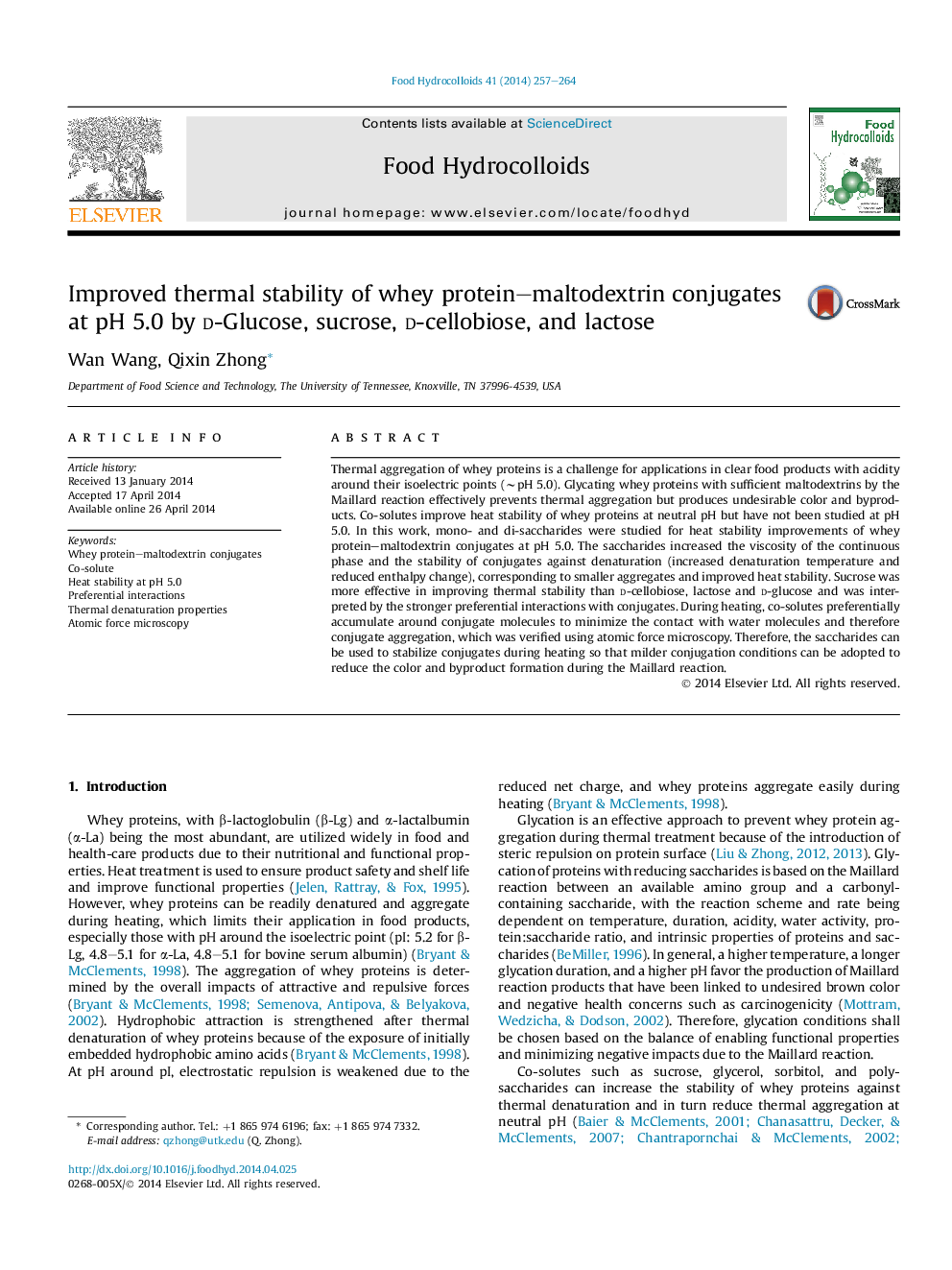| کد مقاله | کد نشریه | سال انتشار | مقاله انگلیسی | نسخه تمام متن |
|---|---|---|---|---|
| 605063 | 1454434 | 2014 | 8 صفحه PDF | دانلود رایگان |

• Heat stability of WPI–MD conjugates at pH 5.0 was improved by mono- /di-saccharides.
• The effectiveness followed the order of sucrose > d-cellobiose > lactose > d-glucose.
• Co-solutes increased solution viscosity and resistance against protein denaturation.
• Preferential interaction theory interpreted heat stability improvement by co-solutes.
• Co-solutes preferentially accumulated around conjugates to prevent aggregation.
Thermal aggregation of whey proteins is a challenge for applications in clear food products with acidity around their isoelectric points (∼pH 5.0). Glycating whey proteins with sufficient maltodextrins by the Maillard reaction effectively prevents thermal aggregation but produces undesirable color and byproducts. Co-solutes improve heat stability of whey proteins at neutral pH but have not been studied at pH 5.0. In this work, mono- and di-saccharides were studied for heat stability improvements of whey protein–maltodextrin conjugates at pH 5.0. The saccharides increased the viscosity of the continuous phase and the stability of conjugates against denaturation (increased denaturation temperature and reduced enthalpy change), corresponding to smaller aggregates and improved heat stability. Sucrose was more effective in improving thermal stability than d-cellobiose, lactose and d-glucose and was interpreted by the stronger preferential interactions with conjugates. During heating, co-solutes preferentially accumulate around conjugate molecules to minimize the contact with water molecules and therefore conjugate aggregation, which was verified using atomic force microscopy. Therefore, the saccharides can be used to stabilize conjugates during heating so that milder conjugation conditions can be adopted to reduce the color and byproduct formation during the Maillard reaction.
Figure optionsDownload as PowerPoint slide
Journal: Food Hydrocolloids - Volume 41, December 2014, Pages 257–264